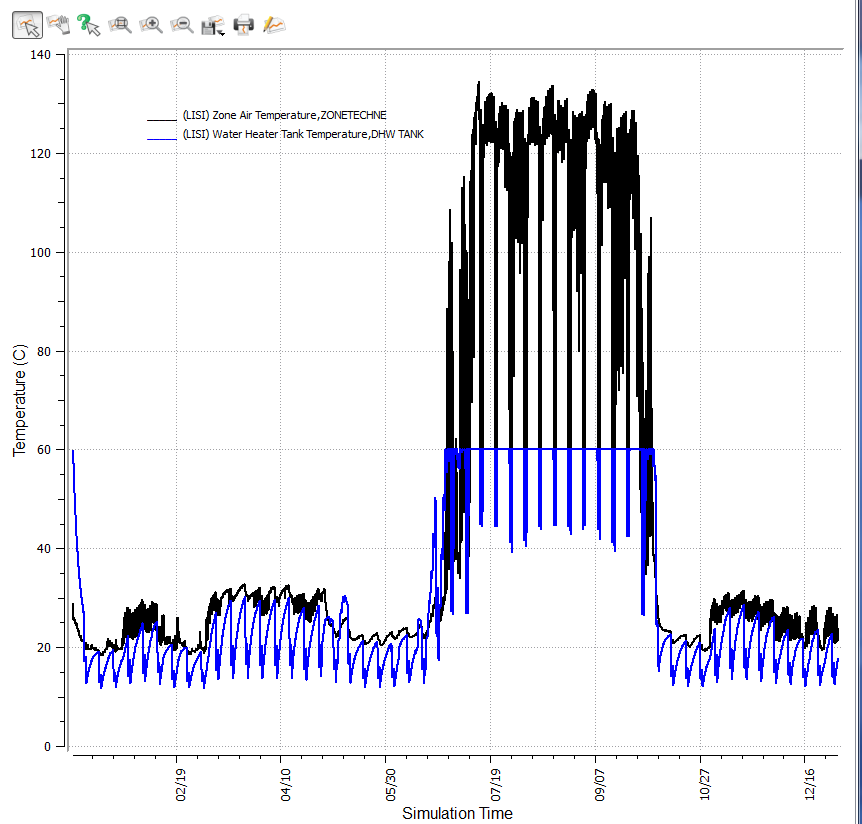calculated humidity ratio invalid - routine unknown
The following warnings occurred in the err-file:
* Warning * Calculated Humidity Ratio invalid (PsyWFnTdpPb) * ~~~ * Routine=Unknown, Environment=RUN PERIOD 1, at Simulation time=06/29 16:40 - 16:41 * ~~~ * Dew-Point= 104.30 Pressure= 101300.00 * ~~~ * Calculated Humidity Ratio= -4.3881 ... Humidity Ratio set to .00001
*** * Warning * Entered Humidity Ratio invalid (PsyWFnTdpPb) *** * ~~~ * This error occurred 10913 total times; *** * ~~~ * during Warmup 0 times; *** * ~~~ * during Sizing 0 times. *** * ~~~ * Max=-0.92399 [] Min=-1077.851682 []
Although no reference is given to the object that causes the problem, it is apparently due to a Coil:Cooling:WaterToAirHeatPump:EquationFit with Gross Rated Sensible Cooling Capacity=3200W and default coefficients (as predefined in OpenStudio).
Can anyone give advice on what can create negative humidity ratios and how to remedy this ?






